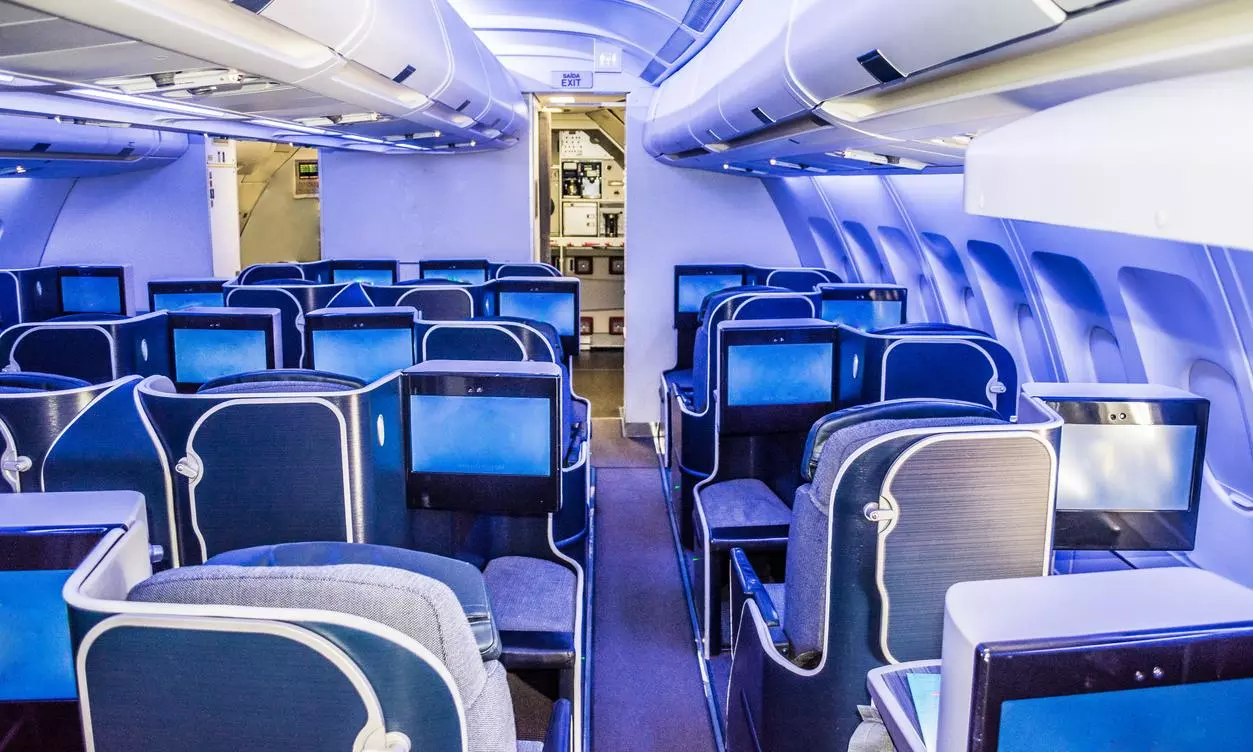
IndiGo's business class is bold gamble with promise of rich dividends
Success of low-cost airline in business class segment will depend on market demand, operational efficiency and brand alignment

The low-cost behemoth IndiGo has thrown a gauntlet at the competition, announcing that it will have business class seats on its busy routes.
This move signals a significant strategic shift for a carrier that has thrived on its no-frills, budget-friendly approach.
As the airline explores new heights, this decision could redefine its market position or pose substantial operational challenges.
Risky step
An airline with a near-monopoly in the Indian skies can afford to make bold strategic changes, knowing it can easily revert to its original plan if needed.
Introducing first class on some flights could be part of using domestic operations as a testing ground before launching long-haul international flights for which it has placed orders for 30 A350-900s. Surveys have indicated a rise in demand for business-class seats, although this trend may be seasonal.
More importantly, IndiGo is at a point where it is prepared to take significant risks while ensuring it does not overlook any potential challenges that could impact the airline in the future.
With Air India and Vistara offering business class seats but currently dealing with the complexities of their merger, IndiGo might see an opportunity to capitalise on this situation. Although this shift will require adjustments in cabin crew culture and reworking the financial calculations for business class offerings, it could be beneficial.
Seat management
For instance, a business class seat on Vistara costs at least 60 per cent more than an economy class seat on the same metro route, yielding higher revenue per seat.
IndiGo may need to sacrifice some economy seats to accommodate the more spacious and comfortable business class seats.
Still, the higher revenue from business class could offset the reduction in economy seats, thus maintaining, if not improving, overall profitability. Moreover, corporate travellers who value comfort and convenience over cost are likely to choose IndiGo if the airline offers competitive premium services.
IndiGo’s entry into the business class market could also enhance its brand perception, positioning it as a versatile airline capable of catering to budget-conscious as well as premium travellers.
Need for investments
This dual-market approach could attract a broader customer base and improve customer loyalty. It could also help IndiGo differentiate itself in an increasingly competitive market, especially as Air India and Vistara navigate the complexities of their merger.
Introducing business class will require significant operational changes for IndiGo. The airline must invest in new seating configurations, enhanced in-flight services, and possibly dedicated check-in counters and lounges.
These changes necessitate substantial investment in infrastructure and staff training. Implementing these adjustments will be critical to the initiative’s success. Effective execution will ensure that IndiGo can offer a premium experience comparable to full-service carriers, justifying higher ticket prices.
Greater competition
IndiGo’s foray into the premium segment will intensify competition in the Indian aviation market.
Vistara, a joint venture between Tata Sons and Singapore Airlines, has leveraged high service standards and strategic route selections to achieve moderate success with its business-class offerings.
Despite its financial struggles, Air India continues to offer business class and is undergoing privatisation efforts to enhance its services.
Historically, Jet Airways also had a strong business class offering but ceased operations in 2019 due to broader management issues. The mixed results of global low-cost carriers (LCCs) introducing business class underscore the importance of market demand, operational efficiency and brand alignment.
Operational performance
IndiGo’s robust financial performance in Q4 FY24 demonstrates its readiness for this strategic shift. The airline reported a total revenue of Rs 17,830 crore, a 26 per cent year-over-year increase, driven by higher passenger traffic and improved yield per revenue passenger kilometre (RPK), which rose to Rs 5.2 from Rs 4.9 the previous year.
Available seat kilometres (ASK) increased by 14 per cent year-over-year to Rs 3,480 crore, further contributing to revenue growth.
Profitability also saw a notable increase, with EBITDA rising by 45 per cent year-over-year to Rs 3,980 crore. However, this fell short of the market estimate of Rs 4,490 crore due to higher-than-expected expenses and lease rentals.
Profit after tax (PAT) more than doubled to Rs 1,890 crore, missing the estimated Rs 2,370 crore. Despite these challenges, IndiGo maintained a stable load factor of 86.2 per cent, slightly above the previous year's 84.2 per cent. The cost per available seat kilometre (CASK) stood at Rs 4.6, up 6 per cent year-over-year, while CASK, excluding fuel costs, was Rs 2.87, reflecting efficient cost management.
Market dynamics
Operationally, IndiGo has expanded its fleet to 367 aircraft, reflecting its commitment to meeting growing demand. The airline’s revenue passenger kilometres (RPK) reached Rs 3,000 crore, supported by a high passenger load factor (PLF) of 86.2 per cent.
These figures highlight IndiGo’s strong market presence and capacity to accommodate additional business-class services without significantly disrupting its operations.
IndiGo’s move will likely prompt responses from its competitors. Full-service carriers like Vistara and Air India may enhance their business-class offerings to retain their premium customer base.
The increased competition could lead to better services and competitive pricing, benefiting consumers. However, the success of IndiGo’s initiative will depend on its ability to effectively implement and market its business-class services while maintaining operational efficiency.
Global predecessors
Globally, several low-cost carriers have experimented with introducing business-class or premium services with varying degrees of success. Norwegian Air Shuttle and JetBlue have successfully offered premium cabins on long-haul routes.
At the same time, AirAsia X and Ryanair faced challenges aligning premium services with their ultra-low-cost business models. These examples highlight the importance of market demand, operational efficiency and brand alignment in the success of premium offerings by low-cost carriers.
The success of IndiGo’s new initiative will depend on its ability to execute operational changes effectively, meet market demand, and navigate the competitive landscape.
